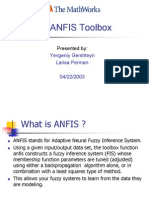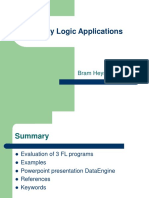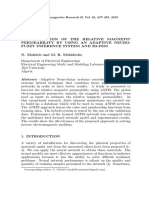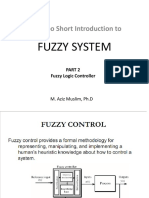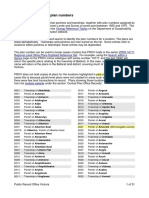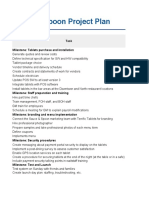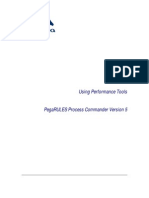0% found this document useful (0 votes)
336 views5 pagesAnfis Structure
1. ANFIS is an adaptive network that uses fuzzy inference systems and neural networks to solve parameter identification problems through a hybrid learning algorithm.
2. ANFIS has a network structure consisting of 5 layers, with each node performing a specific function. Nodes in the first layer generate membership grades and those in later layers calculate firing strengths and output.
3. The ANFIS learning algorithm uses a hybrid approach, with the least-squares method to identify consequent parameters in the forward pass, and gradient descent to update premise parameters in the backward pass.
Uploaded by
secret 31Copyright
© © All Rights Reserved
We take content rights seriously. If you suspect this is your content, claim it here.
Available Formats
Download as DOC, PDF, TXT or read online on Scribd
0% found this document useful (0 votes)
336 views5 pagesAnfis Structure
1. ANFIS is an adaptive network that uses fuzzy inference systems and neural networks to solve parameter identification problems through a hybrid learning algorithm.
2. ANFIS has a network structure consisting of 5 layers, with each node performing a specific function. Nodes in the first layer generate membership grades and those in later layers calculate firing strengths and output.
3. The ANFIS learning algorithm uses a hybrid approach, with the least-squares method to identify consequent parameters in the forward pass, and gradient descent to update premise parameters in the backward pass.
Uploaded by
secret 31Copyright
© © All Rights Reserved
We take content rights seriously. If you suspect this is your content, claim it here.
Available Formats
Download as DOC, PDF, TXT or read online on Scribd
/ 5
